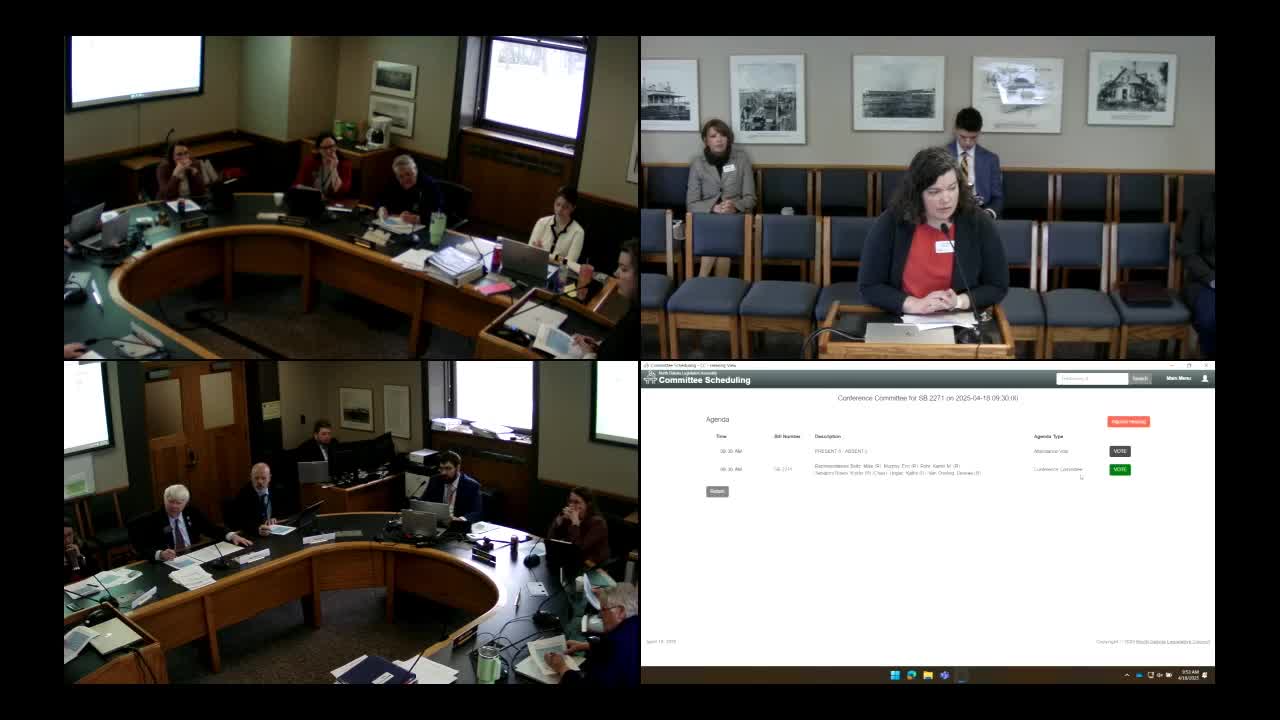Senate panel debates new licensing structure for health facilities in rural areas
April 18, 2025 | Human Services, Senate, Legislative, North Dakota
This article was created by AI summarizing key points discussed. AI makes mistakes, so for full details and context, please refer to the video of the full meeting. Please report any errors so we can fix them. Report an error »

In a recent meeting of the North Dakota Senate Human Services Committee, lawmakers engaged in a thoughtful discussion about the future of licensure for health facilities, particularly in rural areas. The atmosphere was charged with a sense of urgency as committee members sought to address the diverse needs of their constituents, especially those requiring varying levels of care.
The conversation centered around the proposal to establish a single licensure model that would allow facilities to adapt their services based on the acuity of their patients. One committee member emphasized the importance of flexibility, noting that many rural facilities often serve individuals with multiple needs simultaneously. "Today, it's very hard to be all things to all people," they remarked, highlighting the challenges faced by providers in less populated areas.
Senator Hogan raised a crucial point about collaboration, suggesting that the Department of Health should work closely with key stakeholders, including long-term care providers. This proposal was met with agreement, as it aligns with the department's standard practices of involving public comment in rulemaking processes. The committee members expressed a collective desire to ensure that the new licensure framework would be inclusive and responsive to the needs of all providers.
As the discussion progressed, Representative Burr inquired about the specifics of the proposed acuity-based payment model. The committee acknowledged that while the details would need to be developed further, incorporating an acuity structure could enhance the effectiveness of the new licensure system. This approach aims to create a more equitable reimbursement process that reflects the intensity of services provided.
However, as the meeting drew to a close, there was a consensus to keep the language surrounding licensure broad. This decision would allow for a range of licensing models to be considered, ensuring that both small rural facilities and larger institutions could find solutions that work for their unique circumstances. The committee recognized the importance of keeping all options on the table, emphasizing the need for flexibility in addressing the diverse healthcare landscape of North Dakota.
As the meeting wrapped up, the committee members left with a sense of purpose, committed to refining the proposed changes and ensuring that the new licensure framework would ultimately benefit the individuals and communities they serve. The discussions highlighted a pivotal moment in North Dakota's approach to healthcare, one that seeks to balance the needs of rural providers with the complexities of patient care.
The conversation centered around the proposal to establish a single licensure model that would allow facilities to adapt their services based on the acuity of their patients. One committee member emphasized the importance of flexibility, noting that many rural facilities often serve individuals with multiple needs simultaneously. "Today, it's very hard to be all things to all people," they remarked, highlighting the challenges faced by providers in less populated areas.
Senator Hogan raised a crucial point about collaboration, suggesting that the Department of Health should work closely with key stakeholders, including long-term care providers. This proposal was met with agreement, as it aligns with the department's standard practices of involving public comment in rulemaking processes. The committee members expressed a collective desire to ensure that the new licensure framework would be inclusive and responsive to the needs of all providers.
As the discussion progressed, Representative Burr inquired about the specifics of the proposed acuity-based payment model. The committee acknowledged that while the details would need to be developed further, incorporating an acuity structure could enhance the effectiveness of the new licensure system. This approach aims to create a more equitable reimbursement process that reflects the intensity of services provided.
However, as the meeting drew to a close, there was a consensus to keep the language surrounding licensure broad. This decision would allow for a range of licensing models to be considered, ensuring that both small rural facilities and larger institutions could find solutions that work for their unique circumstances. The committee recognized the importance of keeping all options on the table, emphasizing the need for flexibility in addressing the diverse healthcare landscape of North Dakota.
As the meeting wrapped up, the committee members left with a sense of purpose, committed to refining the proposed changes and ensuring that the new licensure framework would ultimately benefit the individuals and communities they serve. The discussions highlighted a pivotal moment in North Dakota's approach to healthcare, one that seeks to balance the needs of rural providers with the complexities of patient care.
View full meeting
This article is based on a recent meeting—watch the full video and explore the complete transcript for deeper insights into the discussion.
View full meeting
